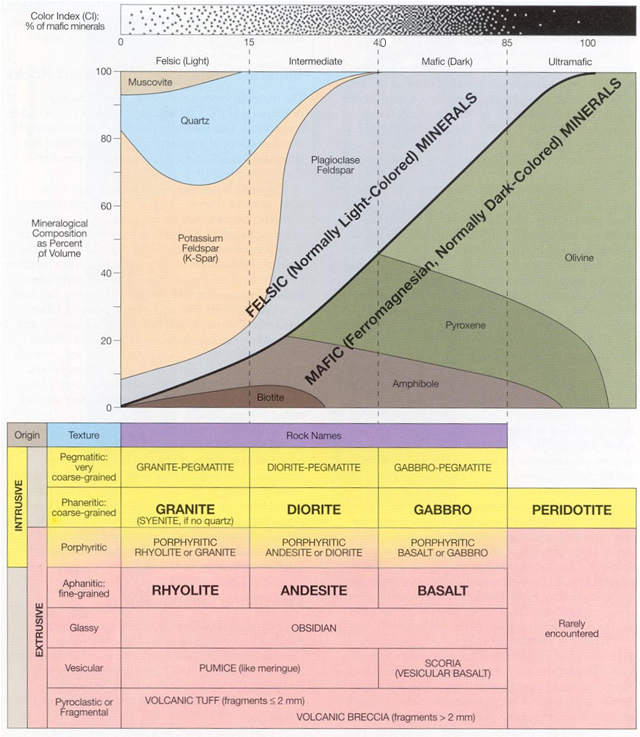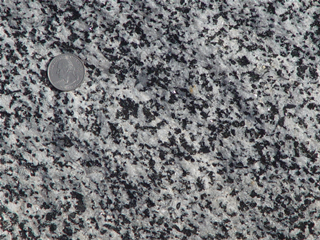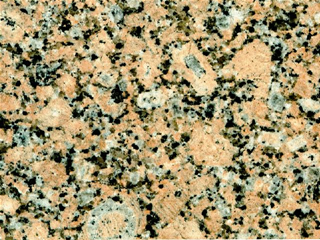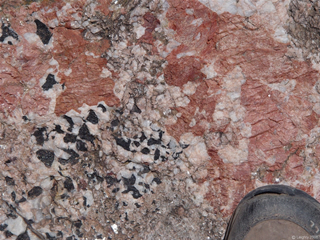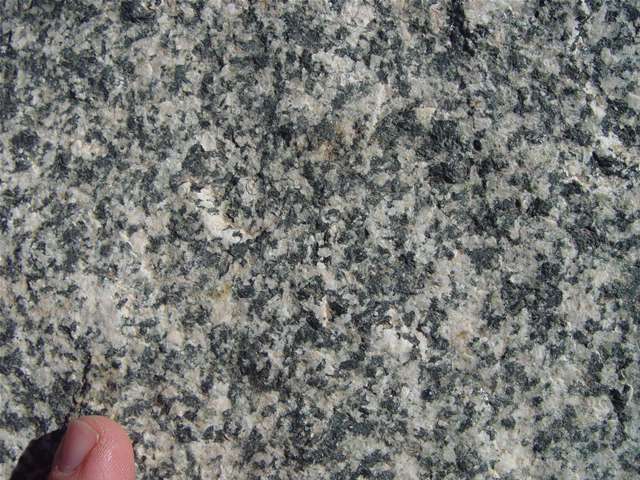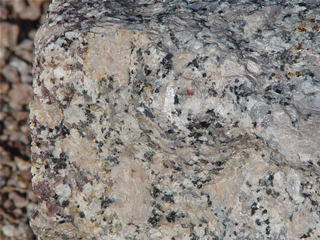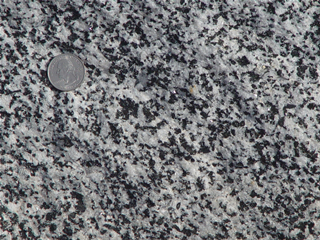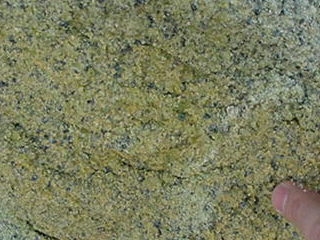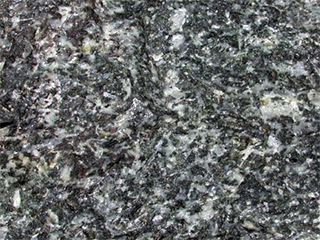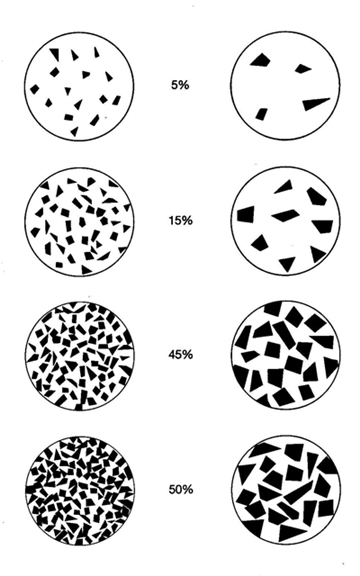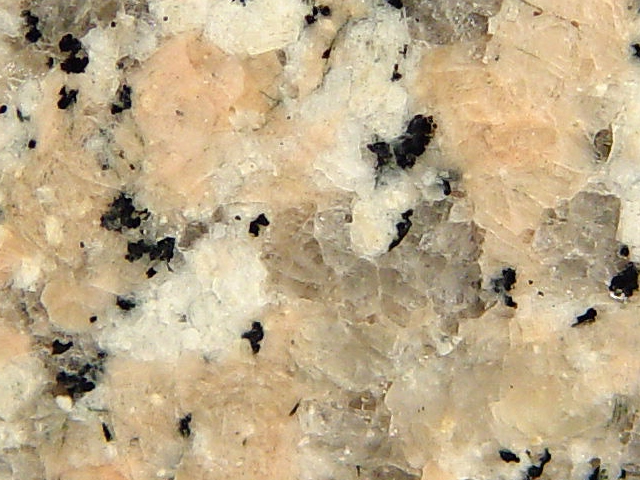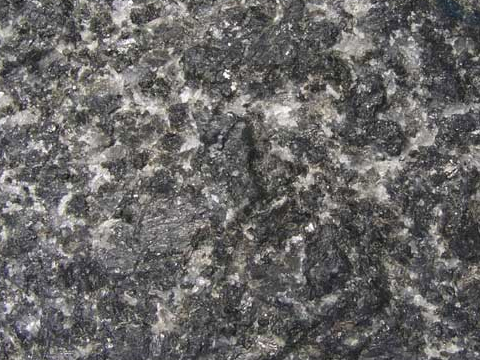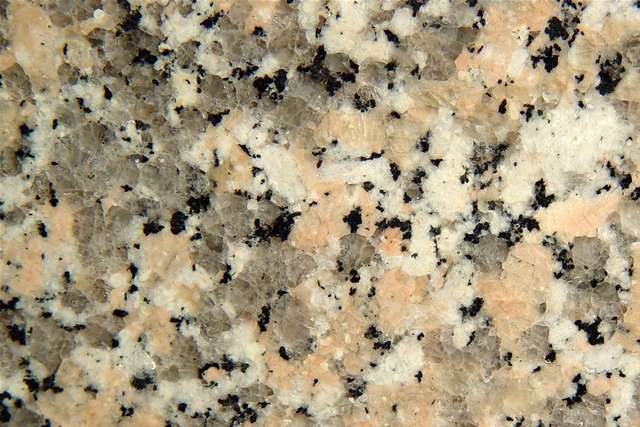Part A
Plutonic Rock Texture & Composition
Most igneous rocks are composed of minerals that crystallize from magma. In observing the size and arrangement, composition, and relative abundance of these crystals in a rock, we can not only identify and name the rock, but also interpret its magmatic history. Both plutonic and volcanic rocks share the same compositional types. However, plutonic rocks include only a few different textures (the size and arrangement of crystals in the rock), whereas volcanic rocks have a multitude of textures that result from the diversity of eruptive conditions on the Earth's surface. Much of this information is shown in the igneous rock classification chart in Figure 5-2.
|
|
|
Figure 5-2. An igneous rock classification chart showing color index, composition, mineralogy, textures, and rock names. |
Textures of Plutonic Rocks
The texture of an igneous rock reflects its volcanic (extrusive) or plutonic (intrusive) origin and refers to the size, shape, and orientation of the crystals, or some other visible feature in the rock. In plutonic rocks, slow cooling and crystallization beneath the Earth's surface yields only a handful of textures, all composed of mineral crystals large enough to see without a microscope. Plutonic rocks mostly have medium-grained (1-5 mm) to phaneritic (5 mm to 2 cm) textures, but sometimes certain conditions allow growth of very large crystals (>2 cm) to form a pegmatitic texture (see Figure 5-3). Alternatively, porphyritic textures are composed of crystals of more than one size, with larger crystals (phenocrysts) surrounded by smaller crystals (collectively referred to as groundmass or matrix).
|
Figure 5-3. Plutonic rock with different textures: phaneritic (coarse-grained), porphyritic, and pegmatitic (from left to right). The diorite at left displays a coarse-grained texture (note quarter for scale). The porphyritic-phaneritic granite at center has large alkali feldspar phenocrysts surrounded by smaller crystals of quartz, plagioclase feldspar, and biotite. The alkali feldspar crystals have been stained to make them stand out better. The pegmatite at right is exposed in Hermit Creek in the Grand Canyon (note boot for scale). |
||
> An equigranular texture (crystals have relatively the same size) where the majority of the crystals can be seen without a microscope (phaneritic means "to see").
> Average crystals are 5 mm to 2 cm in diameter. Medium-grained textures have crystals 1 to 5 mm in diameter.
> Typically forms as magma cools slowly at depth.
> Plutonic rock examples: granite, diorite, gabbro, pyroxenite, peridotite, etc.
> An inequigranular plutonic texture where large phenocrysts and slightly smaller groundmass crystals can be identified without a microscope. The term"porphyritic" refers to an igneous texture with different-sized crystals. "Porphyritic-aphanitic" refers to a more volcanic texture where the groundmass crystals are microscopic.
> Forms as magma crystallizes with at least two stages of cooling: one slower and at depth (forming the phenocrysts), the other faster and less deep (forming the groundmass).
> This texture is gradational with phaneritic textures.
> A porphyritic-phaneritic rock may sometimes be referred to as porphyry (e.g., feldspar porphyry).
> Crystal size >2 cm, rarely reaching many meters in length.
> May be equigranular (same-sized crystals) or inequigranular (different-sized crystals).
> Typically form as water-rich melt/fluid crystallizes in dikes.
> Commonly are granitic in composition and related to felsic intrusions and plutons.
> Plutonic rock example: granitic pegmatite.
|
Example 1 |
|
What is the texture of this plutonic rock (coarse-grained, porphyritic, or pegmatitic)? |
|
coarse-grained |
|
Is this texture equigranular (mostly similar-sized crystals) or inequigranular (significantly different crystal sizes)? |
|
equigranular |
![]()
Compositions of Plutonic Rocks
Plutonic rocks generally have crystals large enough to see with the naked eye, so we have only to identify the minerals and estimate their relative abundances to name the rock. Using a field classification, the composition of the rock (felsic, intermediate, mafic, ultramafic) is determined by estimating the percentage of dark-colored minerals in the rock (also called thee color index).
<15% dark-colored minerals / FELSIC - Rocks with <15% dark-colored minerals are felsic in composition. The dark minerals are usually biotite or amphibole. These light-colored rocks typically have abundant K-, Na-, and Si-rich minerals, like quartz and alkali feldspar.
40-90% dark-colored minerals / MAFIC - Plutonic rocks with 40-90% dark-colored minerals are mafic in composition. The dark minerals include Fe-, Mg-, and Ca-rich minerals amphibole, pyroxene, plagioclase feldspar, and olivine.
15-40% dark-colored minerals / INTERMEDIATE - Rocks with a mixture of light- and dark-colored minerals (15-40%) are intermediate in composition. These rocks typically have a "salt and pepper" look to them.
>90% dark-colored minerals / ULTRAMAFIC - Plutonic rocks with >90% dark-colored minerals are ultramafic in composition. Pyroxene or greenish olivine are common in ultramafic rocks.
Figure 5-4 shows the relative abundances of different minerals for felsic, intermediate, mafic, and ultramafic rock compositions.
|
Figure 5-4. Plutonic rocks with different compositions: felsic, intermediate, mafic and ultramafic (clockwise from upper left). |
|
Determination of the abundances of certain elements (like Si, Fe, Mg, etc.) by chemical analysis can be helpful, not only in classification, but in description of the origin of the rocks. For example, high silica content (>63 weight % SiO2) in an igneous rock suggests a magma generated from melting silica-rich continental crust. Alternatively, low SiO2 (<52 wt% SiO2) form from partial melting of the silica-poor mantle.
> Generally light in color; <15% dark-colored minerals (color index <15).
> Light-colored minerals include quartz (gray to clear), alkali feldspar (peach-colored to pale red), and plagioclase feldspar (white to gray), whereas the dark-colored minerals are mostly biotite (black flakes).
> Geochemistry: high SiO2 (>63 wt%), Al2O3, Na2O, K2O, etc., and low in MgO, FeO, and CaO.
> Typically forms from melting continental crust.
> Plutonic rock examples: granite, granodiorite, syenite, quartz monzonite, alkali feldspar granite.
> Typically light and dark color ("salt & pepper"); 15-40% dark-colored minerals (color index 15-40).
> Light-colored minerals mostly include plagioclase feldspar with lesser quartz, whereas the dark-colored minerals are mostly amphibole (black masses or needles) and biotite (black flakes).
> Geochemistry: SiO2 (52-63 wt%).
> Commonly forms from hydrous (water-rich) crustal melting, magma mixing, etc.
> Plutonic rock examples: diorite, quartz diorite, tonalite.
> Generally dark in color; 40-90% dark-colored minerals (color index 40-90).
> Dark-colored minerals mostly include pyroxene (dark green to black) and olivine (green), whereas the light-colored minerals are mostly plagioclase feldspar (white to gray).
> Geochemistry: low SiO2 (45-52 wt%), Al2O3, Na2O, K2O, etc., and high MgO, FeO, and CaO.
> Typically form from melting mantle.
> Plutonic rock examples: gabbro, diabase.
> Very dark in color (black to green); >90% dark-colored minerals (color index >90).
> Dark-colored minerals almost exclusively pyroxene (dark green to black) and olivine (green).
> Geochemistry: low SiO2 (<45 wt%) and very high MgO, FeO, and CaO.
> Represents actual mantle rock.
> Plutonic rock examples: peridotite, pyroxenite.
Estimating Minerals Percentages
A quick way to determine plutonic rock composition is to estimate the percentage of dark minerals only (a.k.a. color index, shown in Figure 5-5). This is called a field classification, where no detailed knowledge of rock compositions is necessary. Figure 5-6 is a comparison of relative abundances that is useful in visually estimating percentages and is helpful in determining the color index of a rock.
|
Figure 5-5. Color index (CI). Rocks with low amounts of dark-colored minerals have lower color indices, whereas rocks with abundant dark-colored minerals have higher indices. |
|
Example 2 |
|
Estimate the color index (the amount of dark-colored minerals) for this rock |
|
C.I. <15% |
|
Example 3 |
|
Estimate the color index (the amount of dark-colored minerals) for this rock |
|
C.I. >40% |
![]()
![]()
![]()
|
Example 4 |
|
What composition does this rock have? |
|
felsic |
![]()
